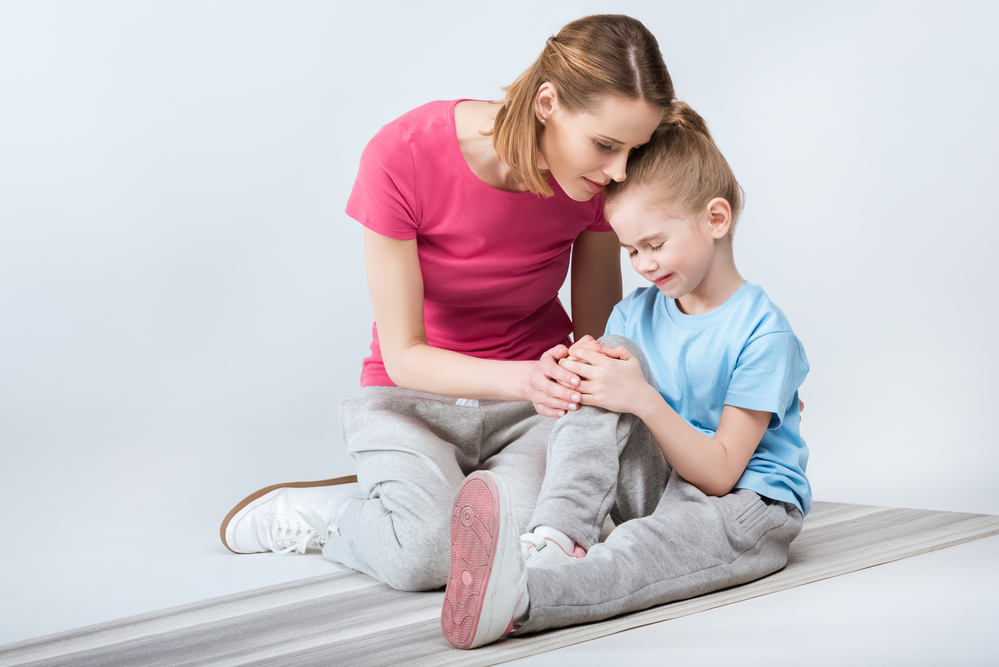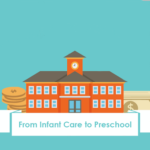
Has your child claimed that his/her legs feel painful, especially at night?
Relax Mama, it’s not as bad as it seems – your child is most likely experiencing growing pains.
Growing pains typically occur in early childhood, around 3 to 4 years old, and may re-appear when your child is between 8 to 12 years old.
Read also: Understanding Your Preschooler’s Milestones: 3 to 4 Years old
What causes growing pains?
Contrary to popular belief, growing pains is not part of the growth spurts that your child goes through.
Growing pains in children may simply be muscle aches that your child experiences when he/she overexert his/her muscles as a result of intense activities. These activities include running, jumping and climbing, which is why growing pains are more commonly experienced after your child’s sports sessions.
How do growing pains feel like?
Children go through growing pains in different intensities. For some, it may be very painful but the episodes are less frequent, while for others, the pain is less intense but it comes and goes quite often.
Growing pains in children are described as cramping, achy muscle pains that some preschoolers and pre-teens feel in both their legs, especially in the front of the thighs, back of legs and behind the knees. The pain is usually felt in the late afternoon and evenings, which may cause your child to wake up in the middle of his/her sleep at night.
If your child seems fine in the morning, after a night of complaining of growing pains, do not dismiss this as him/her faking it. Growing pains usually disappear in the morning – and they usually do not affect your child’s ability to play sports to run around.
Researchers have found that children who have growing pains tend to be more sensitive to pain. This group of children is more likely to have headaches and abdominal pain as well.
How are growing pains diagnosed?
If your child alerts you of the pain in his/her legs and/or limbs that are unbearable, do take him/her to the doctor to get it checked out.
The doctor will examine your child as ask questions about his/her medical history and symptoms. It is important to rule out all possible causes of the pain before diagnosing it as growing pains.
If it turns out that your child indeed has growing pains, the results of the physical exam will not reveal anything abnormal.
Treatment for growing pains
Treatment for growing pains in children is dependant on the intensity of the pain that your child is experiencing.
Here are some things you can do to help your child ease the discomfort:
- Massaging the legs
- Stretching the leg muscles
(Note: For younger children, do help them bu guiding the leg movement) - Keeping a warm cloth or heating pad on the sore leg. Do keep it comfortably warm and be careful not to burn the skin. Do not use these while your child is asleep.
If the pain doesn’t seem to subside, ask your doctor if he/she can prescribe medication to ease the pain, such as acetaminophen or ibuprofen.
When should I take my child to see the doctor?
If you are not sure if the pain that your child is experiencing is indeed growing pains, it is worthwhile to note that growing pains are almost always felt in both legs. If the pain is concentrated on one side of the leg, it may be a sign of a condition that is more serious. Do see your doctor immediately for advice and treatment.
It is also important to note that growing pains affect muscles, not joints. They also do not cause limping or fever.
Alert your doctor if your child’s leg pain is accompanied with the following symptoms:
- Injury (i.e. as a result of a fall)
- Fever
- Loss of appetite
- Limping or difficulty walking
- Joints that are red, warm, painful or swollen
- Visible rash
- Tiredness
- Weakness
- Weight loss
While they may not be symptoms of growing pains, your doctor will examine your child and run some tests to get his/her legs checked out.
Read also: Proven Tips to Help Your Kids Grow Taller























